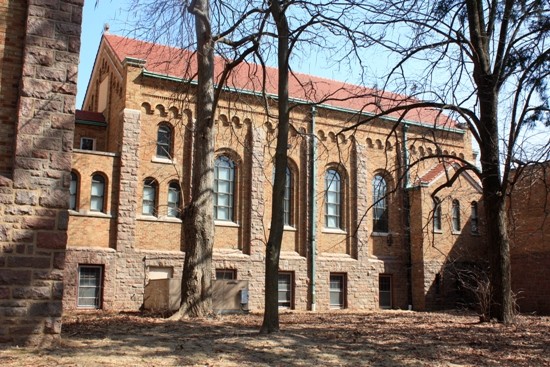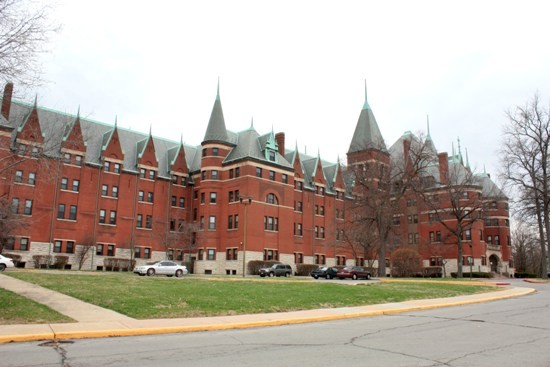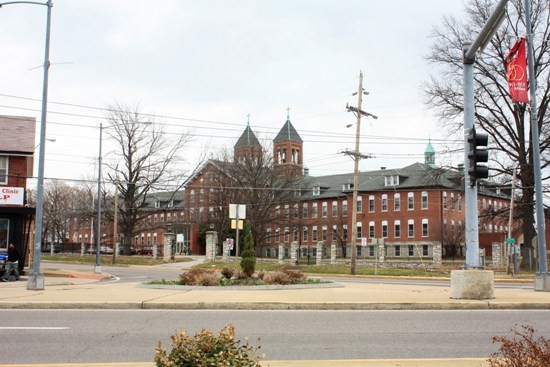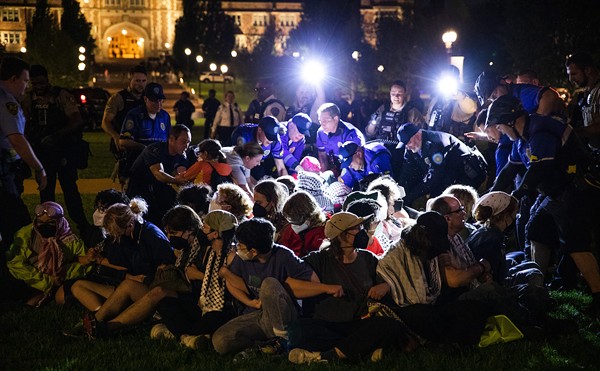One hundred years ago, if you were traveling out northwest just past St. Louis city limits toward St. Charles, you would see a landscape dramatically different than today's suburbia along the St. Charles Rock and Natural Bridge roads. Rolling countryside and farm fields would yield to an impressive sight; one after another, Renaissance and Gothic castles would rise in front of you. From the late nineteenth century to the the present day, this corner of St. Louis County held the great charitable institutions that served the destitute and mentally ill of the burgeoning population of the city to the east. Believing that country air and solitude would aid in their missions, each institution constructed grandiose buildings, believing that great architecture could aid them in literally creating great people.
The history of the land that now makes up the suburbs of Normandy and Bel-Nor begins, like so many early St. Louis stories, in Europe, and in this case, in the northern French province of Normandy. That's where Jean Baptiste Charles Lucas was born in 1758. Lucas emigrated to America to seek his fortune, and after several different ventures, ended up with his family in St. Louis. He and his wife raised several children, many of whom featured prominently in early Missouri politics. His son, Charles, earned the dubious distinction of dying in an armed duel with Thomas Hart Benton on Bloody Island.
Jean-Baptiste Lucas' family also purchased a large tract of land out the St. Charles Rock Road, naming the land Normandy after his homeland. Because the Rock Road was paved (with rock, of course), the land proved valuable due to its prime location between St. Louis and St. Charles. Anne Lucas, Jean-Baptiste's daughter born in 1796, married Capt. Theodore Hunt, bringing together the two families' fortunes and land. Lucas-Hunt Road commemorates this important marriage. A devout Catholic, she also assured that her family's large tracts of land would go toward charitable organizations that were increasingly outgrowing their cramped quarters in downtown St. Louis. By the late nineteenth century, the castlelike buildings that would house these charities began to rise from the fields of the old Lucas estates.
St. Vincent's Hospital for the Insane
Inspired by St. Vincent de Paul, who focused on serving the poor and needy, the Sisters of Charity operated St. Vincent's from 1858 until 1978 when the hospital closed permanently. While originally downtown, the sisters moved out to their new hospital in 1895. Designed by George R. Mann, the new hospital followed the latest advances in mental health institutions, known as the Kirkbride Plan. Dr. Thomas Kirkbride called for institutions with light-filled, airy interiors and carefully landscaped grounds to aid in the recovery of patients. The architecture, based off of French Renaissance chateaus, further promoted doctors' beliefs that august and striking architecture would filter down to its inhabitants. A reader once confessed to me that she and her teenage friends would taunt patients in the gardens back in the 1960s; the building now serves as low-income apartments. I also spoke to a resident who insists the castle is haunted.
St. Vincent Home for Children
To the north of St. Vincent's Hospital lies the St. Vincent Home for Children, historically known as the German St. Vincent Orphan Home. Founded in 1850 in the wake of the infamous cholera epidemic that killed thousands and left hundreds of orphans, the orphanage sought to provide a stable upbringing for children in need. Staffed by the Sisters of Christian Charity, the orphanage moved out to its current campus in 1914, building a stunning, Romanesque Revival building that harkens back to medieval abbeys. Traditional orphanages are now a thing of the past, but the home still serves at-risk youth.
Continue on for more St. Louis castles.









